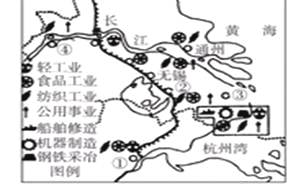问题
问答题 案例分析题
经济活动是人类赖以生存和发展的基础。阅读下列材料,结合所学知识,回答问题。
材料一:
历代盛行的官营作坊,在明清时期受到冲击。江南城镇附近农户不事农耕,“尽逐绫绸之利”,渐成风尚,城镇中“络玮机杼之声通宵彻夜”的情形亦载于史籍。明万历年间,仅苏州丝织业中受雇于私营机房的职工就有数千人,是官局的两三倍。清初在苏州复置官局,设机800张,织工2330名。至康熙六年(1667)缺机170张,机匠补充困难,而同一时期苏州民机不少于3400张。“家杼轴而户纂组,机户出资,机工出力,相依为命久已。”
——摘自许涤新、吴承明主编《中国资本主义发展史》
材料二

材料三 甲午战争前后,不同类型的两种企业在我国近代民族工业中所占比重变化表
| 甲午战争前 | 甲午战争后 | |
| 商办企业 | 22.4% | 70% |
| 官督商办企业 | 77.6% | 30% |
材料四民国初年沪宁杭地区民族工业分布示意图

回答:
材料三所反映的变化说明了什么?结合所学知识分析其原因。
答案
参考答案:
在19世纪末20世纪初中国民族资本主义经济初步发展
原因:帝国主义的资本输出,进一步破坏了中国自然经济,提供了客观条件;清政府放宽了对民间设厂的限制。
